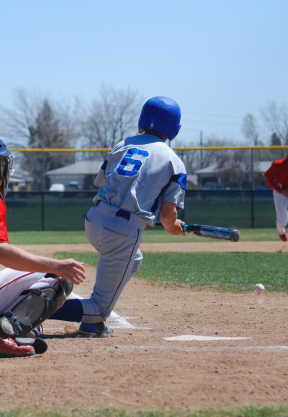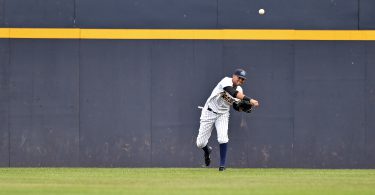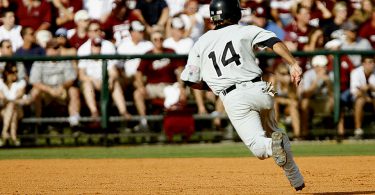The Situation:
It’s an early season game at the end of February and the weather is cool and damp. It’s the top of the 7th in a tie game. There is no one out and runners on first and second with the 9-hitter coming to the plate. It’s a bunt situation, and given the visiting team’s propensity to sacrifice, everyone in the stadium knows the bunt is coming.
The Play:
The catcher comes out in front of home plate and relays the bunt defense coverage. The pitcher will be responsible for the third base side of the field and the 3rd baseman is hoping to be able to stay on the bag to get the lead runner on a poor bunt. The catcher squats behind home and gives the pitcher the sign for a fastball away. The pitcher comes set and delivers a well-executed fastball away. Wanting to bunt down the 3rd base line, the batter reaches at the ball and gets the bunt down. It’s not great placement, more towards the mound than the third base line, but the pace is good. The pitcher will only have a play at first. He comes off the mound hard, just as he should. As he is getting to the ball, he plants to put on the breaks. His right cleat slips in the grass as he collects the ball. He falls on his rear end with the ball in his mitt.
The Outcome:
The pitcher can do nothing but sit there embarrassed with the ball in his glove as he watches the batter cruise into first base. The bases are loaded and the table set for the top of the order.
What Went Wrong:
Early in the college baseball season when many programs are dealing with cooler, wetter weather, it’s common for fields to still have rye grass while the Bermuda grass underneath it lays dormant. Rye handles cooler weather well, and keeps fields looking good until Bermuda regains it’s color and comes back to life. Rye is also a slicker grass, and the culprit for many slips, like the one above.
When the pitcher went to field the ball, he didn’t take the field conditions into consideration. Instead of getting under control and chopping his steps as he gets to the ball, a tactic that will give him the best chance to stay on his feet and make the play, he tries a hard plant while still running at a good speed. A hard plant in wet, damp grass is asking for trouble, and trouble is exactly what the pitcher got. We see slips like this happen often early in the year, or in the MLB postseason. The Cleveland Indians right fielder suffered a similar spill running after a double down the line, that turned into a triple after the slip.
Sometimes slipping on a wet field is out of a fielders’ control, but the possibility is something players have to be aware of ahead of time. Chopping your steps, widening your base and dropping your hips to lower your center of gravity as you approach the ball (much as a base runner would after running through 1st on an infield single) will give you the best opportunity to stay on your feet. As will thinking the game in advance and knowing the field conditions.







